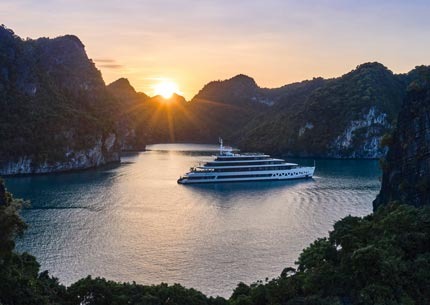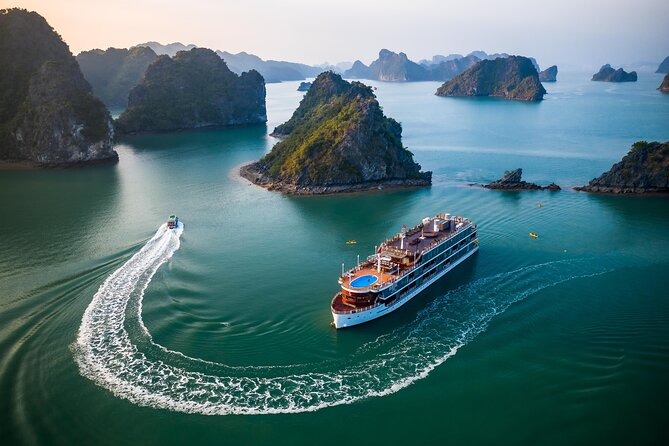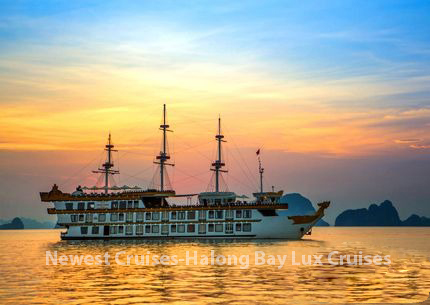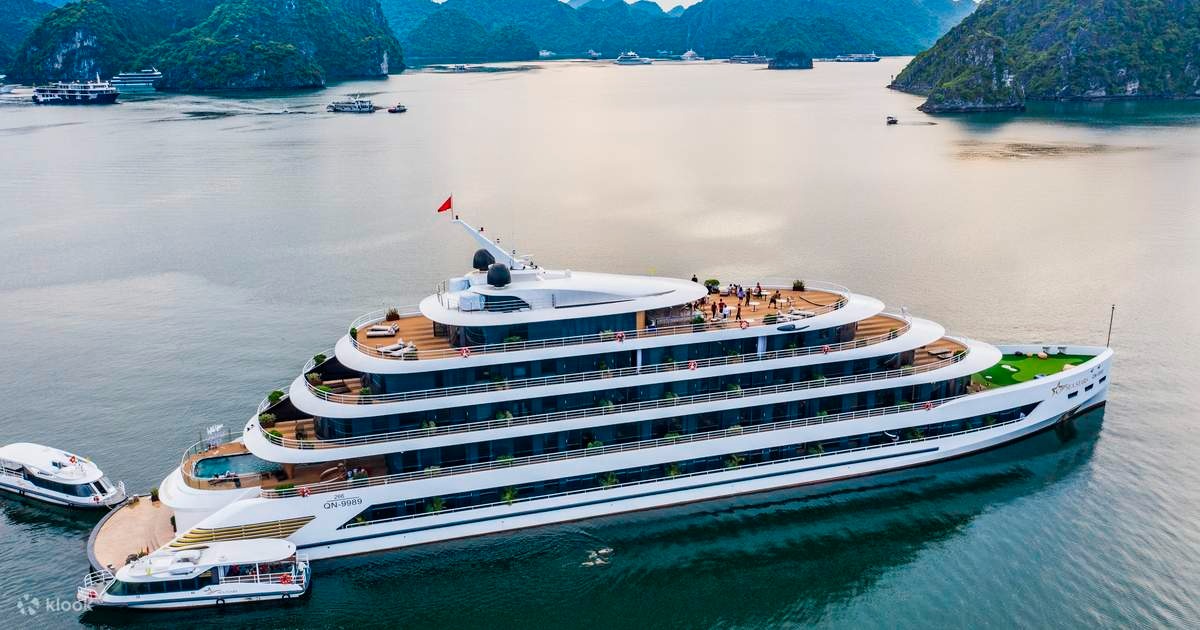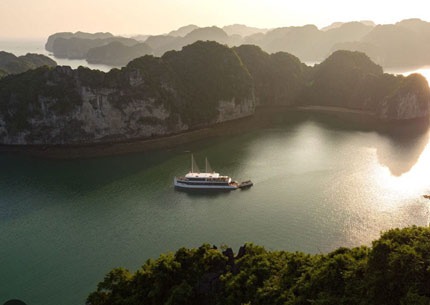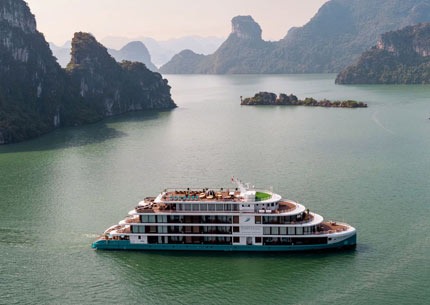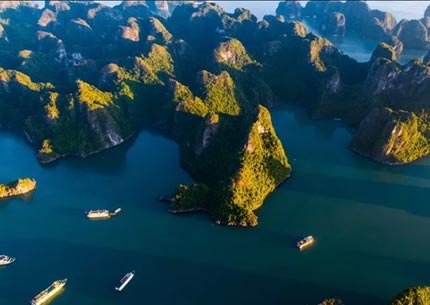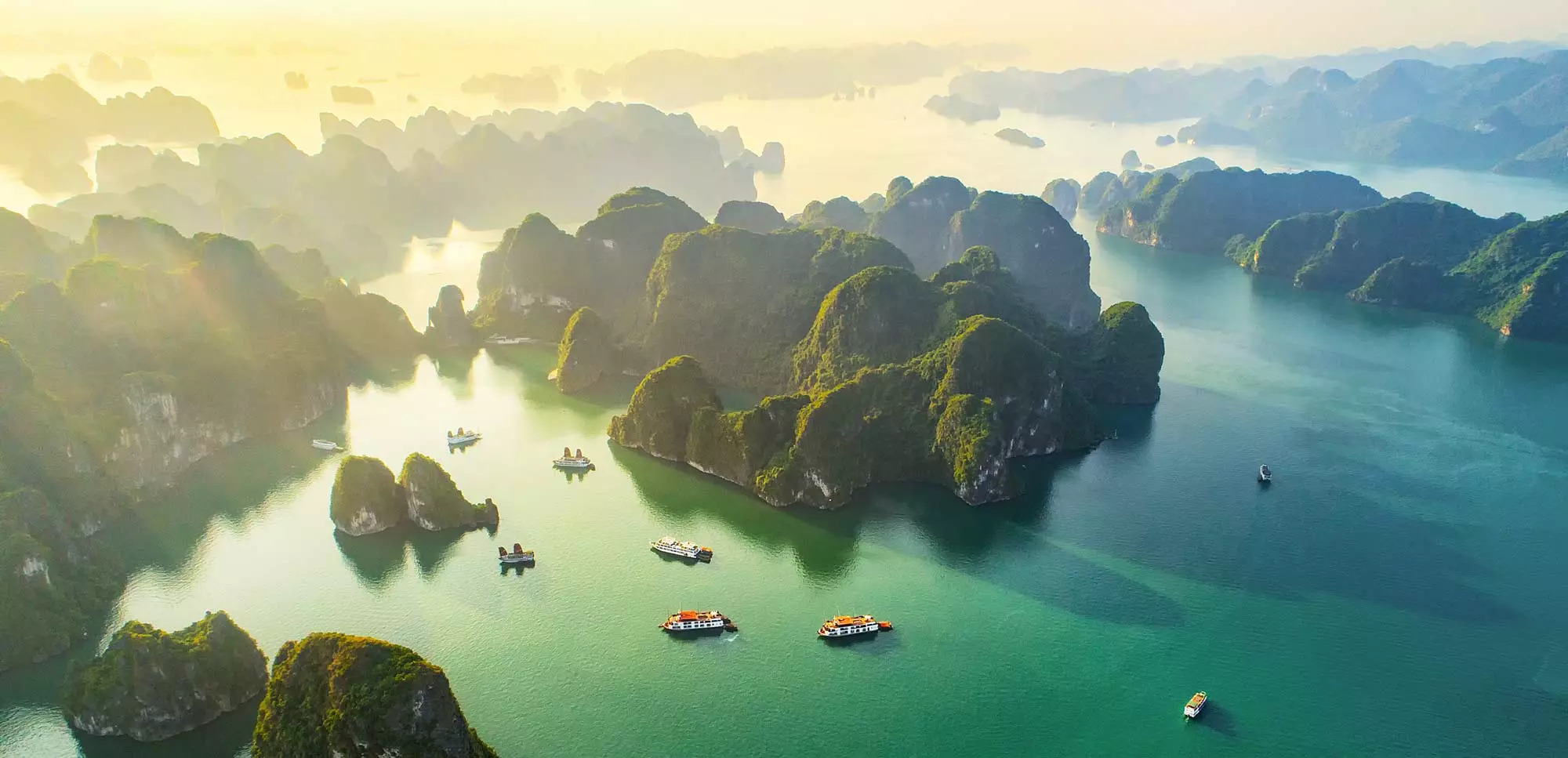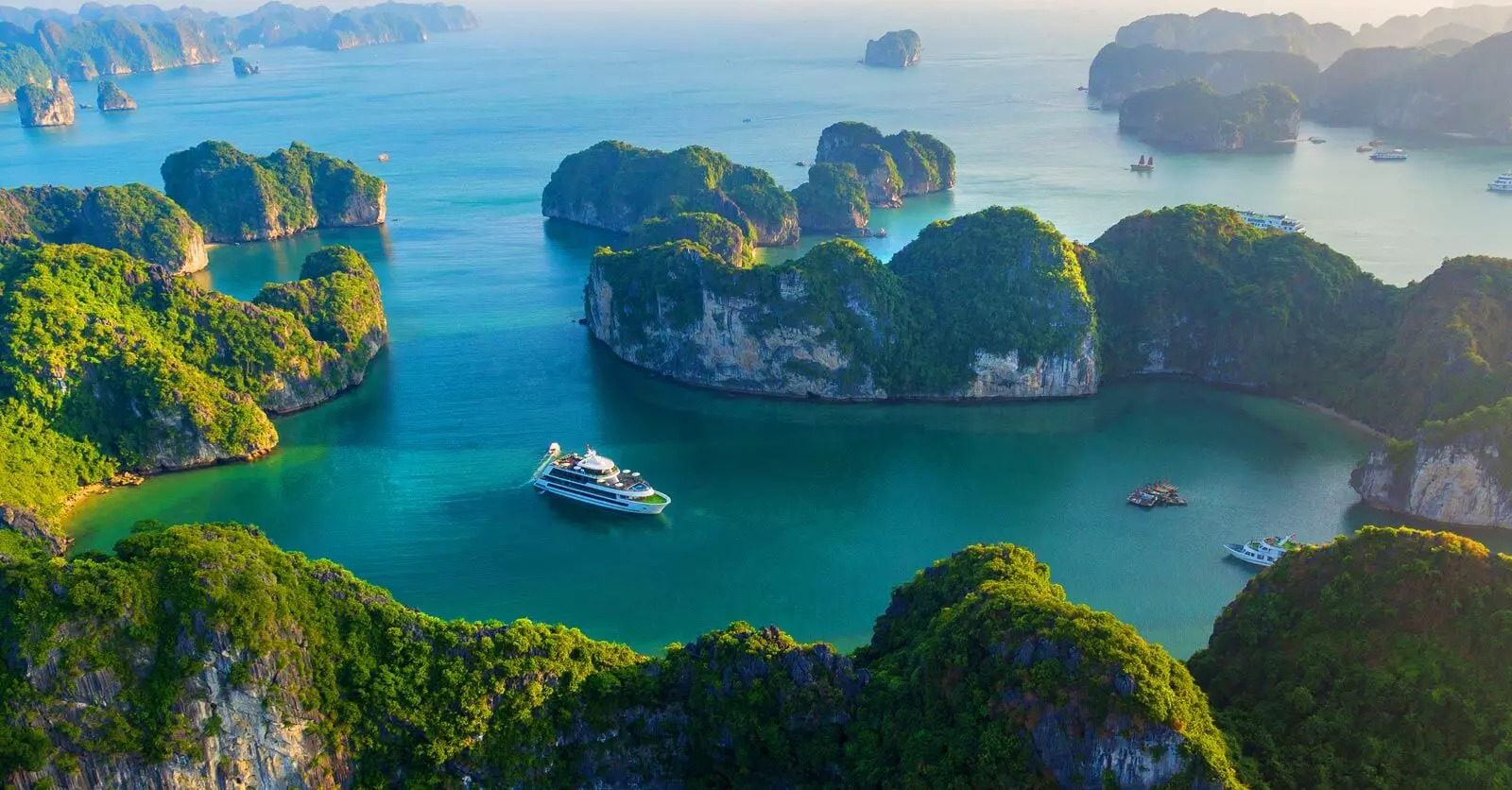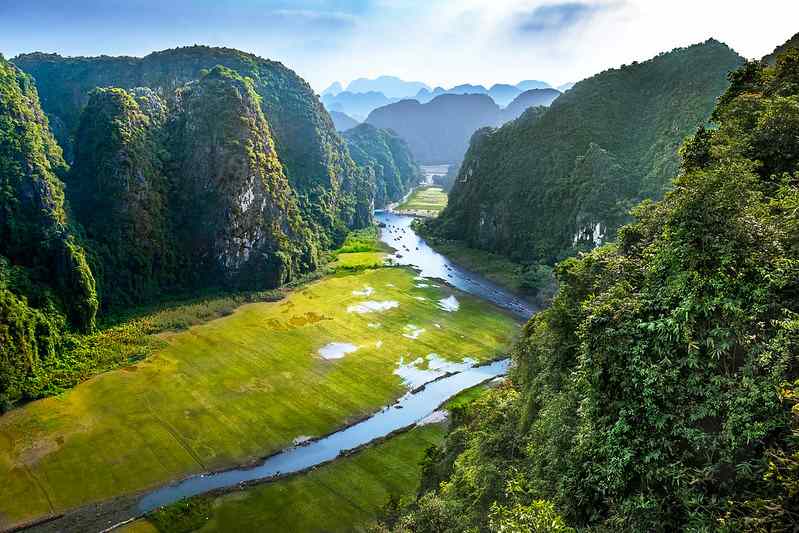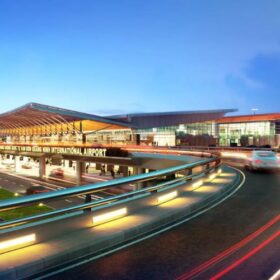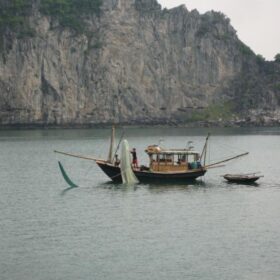Halong Bay Weather Guide: 15 Monthly Forecasts for 2025-2026
Wondering about the ideal time to visit Vietnam’s most iconic seascape? Our comprehensive 2025 Halong Bay weather guide breaks down temperatures, rainfall patterns, and expert travel recommendations for each month to help you plan the perfect cruise experience.
Understanding Halong Bay’s Climate Seasons
Halong Bay’s distinct tropical monsoon climate creates four well-defined seasons throughout the year, each offering a unique experience for travelers. Before diving into the monthly breakdown, let’s understand how these seasonal patterns shape your visit to this UNESCO World Heritage Site.
The climate in Halong Bay is characterized by the interplay between the northeast and southwest monsoons, creating a rhythm of wet and dry periods that influence everything from water visibility to outdoor activities.
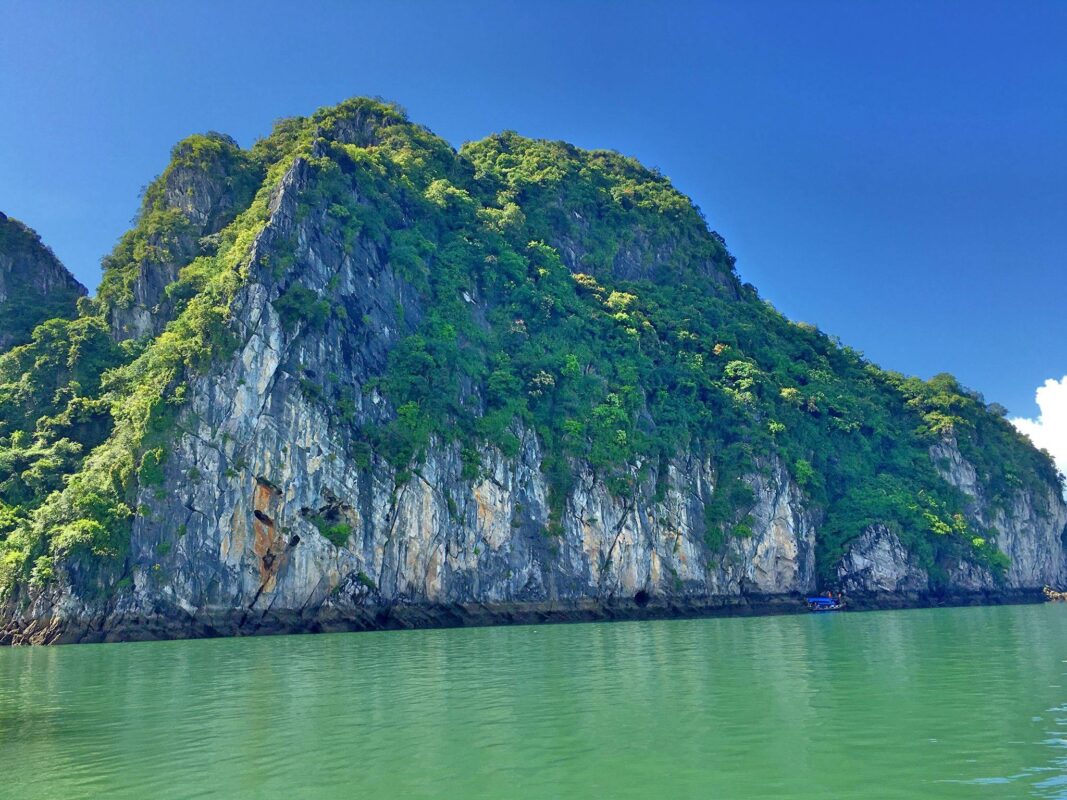
Northeast Monsoon Season (Winter-Spring)
From October through April, the northeast monsoon brings cooler, drier air to Halong Bay. This period generally offers stable weather conditions with less rainfall, making it popular for tourism. However, the winter months (December-February) often bring a mystical fog that drapes over the limestone karsts—creating atmospheric views but sometimes limiting visibility.
Southwest Monsoon Season (Summer-Fall)
From May through September, the southwest monsoon dominates, bringing warmer temperatures, higher humidity, and increased rainfall. July and August typically experience the heaviest precipitation, with occasional typhoons possible. Despite this, the lush greenery and dramatic skies can provide spectacular photography opportunities for travelers willing to navigate occasional weather disruptions.
Halong Bay Weather By Month: Detailed 2025 Forecast
January: Mystical Winter Fog and Serene Waters
- Temperature Range: 15°C – 20°C (59°F – 68°F)
- Average Rainfall: 15-25mm
- Sunshine Hours: 3-4 hours daily
- Humidity: 80-85%
- Water Temperature: 19°C (66°F)
January in Halong Bay offers a unique atmospheric experience with its mystical winter fog enveloping the limestone karsts. This creates a dreamlike landscape that photographers particularly treasure. The cooler temperatures make outdoor activities comfortable, though you’ll want to pack layers.
With minimal rainfall (typically brief morning drizzles), cruise cancellations are rare, making January a reliable month for planning. The water appears emerald green but is cooler for swimming at 19°C. This is an excellent time for travelers seeking tranquility, as tourist numbers drop significantly after the holiday season rush.
Travel Tip: Early morning cruises capture the magical moment when sunlight breaks through the mist, illuminating the karsts—a phenomenon locals call “the dragon’s breath.”
February: Lingering Mist With Emerging Sunshine
- Temperature Range: 16°C – 21°C (61°F – 70°F)
- Average Rainfall: 20-30mm
- Sunshine Hours: 4-5 hours daily
- Humidity: 80-82%
- Water Temperature: 20°C (68°F)
February continues the cool, misty ambiance of winter but with gradually increasing sunshine hours. The landscape remains shrouded in intermittent fog, especially in the early mornings, creating a serene, otherworldly atmosphere across the bay.
This month coincides with Tết (Vietnamese Lunar New Year) in some years, which can impact availability and pricing. Many local businesses close during this period, though major cruise operators maintain services with festive themes.
As February progresses, temperatures begin to rise slightly, and the waters become marginally warmer. The moderate weather makes this an excellent time for exploring caves and grottoes without the discomfort of summer heat or heavy rainfall.
Packing Essentials: Bring a light jacket or sweater for morning and evening cruises, when temperatures can feel chillier due to sea breezes.
March: Spring Awakening With Clearer Skies
- Temperature Range: 19°C – 24°C (66°F – 75°F)
- Average Rainfall: 40-50mm
- Sunshine Hours: 5-6 hours daily
- Humidity: 83-85%
- Water Temperature: 21°C (70°F)
March marks the beginning of spring in Halong Bay, bringing increasingly comfortable temperatures and clearer skies. The misty mornings begin to give way to sunnier days, providing excellent visibility for appreciating the full majesty of the limestone formations.
With the winter fog lifting, March offers some of the year’s best photography conditions. The emerald waters become more vibrant under increased sunlight, and the surrounding vegetation begins to show fresh spring growth. Rainfall remains minimal, typically coming as short afternoon showers that quickly clear.
This transition month sees tourism beginning to increase, though it hasn’t yet reached peak levels. Water activities become more appealing as temperatures rise, making March ideal for travelers wanting balanced weather without extreme heat or crowds.
Activity Recommendation: March provides excellent conditions for kayaking expeditions through hidden lagoons and sea caves, with comfortable temperatures and good visibility.
April: Prime Weather With Blossoming Landscapes
- Temperature Range: 22°C – 27°C (72°F – 81°F)
- Average Rainfall: 60-70mm
- Sunshine Hours: 6-7 hours daily
- Humidity: 85-87%
- Water Temperature: 23°C (73°F)
April delivers some of Halong Bay’s most favorable weather conditions, making it a prime month for visitors seeking the perfect balance of comfort and clarity. Temperatures are pleasantly warm without the intense heat of summer, and rainfall remains moderate—usually brief afternoon showers that provide welcome cooling.
The landscapes truly come alive in April, with lush vegetation covering the karst formations and occasional wildflowers adding splashes of color. Water visibility reaches excellent levels, making this an outstanding time for swimming, snorkeling, and underwater photography.
As one of the peak tourism months, April sees increased visitor numbers and higher cruise prices. The bay becomes more active with tour boats, though the vast expanse means it rarely feels crowded except at major attractions.
Insider Tip: Book a 3-day luxury cruise during April to explore beyond the main bay into less-visited areas like Lan Ha Bay, where you’ll find pristine beaches and quieter waters even during high season.
May: Warming Temperatures With Occasional Showers
- Temperature Range: 25°C – 31°C (77°F – 88°F)
- Average Rainfall: 150-180mm
- Sunshine Hours: 6-7 hours daily
- Humidity: 86-88%
- Water Temperature: 25°C (77°F)
May transitions Halong Bay toward summer conditions, with noticeably warmer temperatures and increasing humidity. While still considered part of the spring season, this month sees the first significant increase in rainfall, though primarily in the form of short afternoon thunderstorms rather than all-day downpours.
The landscape reaches peak lushness, with vibrant green covering the limestone karsts. Water temperatures become very comfortable for swimming and water activities at around 25°C. Morning cruises typically enjoy clear skies and excellent visibility before afternoon clouds build.
Tourism begins to decrease slightly from April peaks as Southeast Asia enters its traditional rainy season. This creates a sweet spot of good weather with fewer crowds and potential for lower prices on luxury cruises.
Best For: Nature enthusiasts who appreciate dramatic skies and lush scenery, with the afternoon thunderstorms creating spectacular photo opportunities as they roll across the bay.
June: Early Summer Heat With Increasing Rainfall
- Temperature Range: 27°C – 33°C (81°F – 91°F)
- Average Rainfall: 230-270mm
- Sunshine Hours: 5-6 hours daily
- Humidity: 87-89%
- Water Temperature: 27°C (81°F)
June marks the definitive shift into Halong Bay’s summer season, with temperatures climbing and rainfall increasing significantly. The weather pattern typically features hot, sunny mornings followed by afternoon thunderstorms—often intense but usually brief. These storms can create dramatic skyscapes and cooling relief from the day’s heat.
Humidity levels peak in June, creating a tropical atmosphere that can feel quite intense during midday hours. The warm water temperatures (around 27°C) make swimming particularly refreshing, and the rain-washed landscapes showcase vibrant greenery across the karst formations.
This month sees tourism numbers decline as the rainy season begins, resulting in better availability and often lower prices for cruises. While there’s a higher risk of weather-related disruptions, most cruise operators are well-adapted to the seasonal patterns.
Activity Focus: June offers excellent opportunities for swimming and exploring sea caves, where the cooler air provides relief from the outside heat. Morning activities are recommended before afternoon rains arrive.
July: Peak Summer With Tropical Downpours
- Temperature Range: 28°C – 34°C (82°F – 93°F)
- Average Rainfall: 280-320mm
- Sunshine Hours: 5-6 hours daily
- Humidity: 85-90%
- Water Temperature: 28°C (82°F)
July brings Halong Bay’s summer season to its peak intensity, with the hottest temperatures of the year and substantial rainfall. This month typically experiences tropical downpours that can be heavy but are often concentrated in the afternoon, leaving mornings relatively clear for activities.
The bay takes on a distinctly tropical character in July, with dramatic cloud formations, electric-blue waters on sunny days, and lush vegetation covering every available surface of the limestone karsts. The combination of sunshine and rain creates spectacular rainbows that arch over the bay—a photographer’s delight if you’re patient.
While July falls within the typhoon season for Northern Vietnam, direct hits on Halong Bay are relatively rare. However, peripheral effects from distant storms can cause cruise cancellations or itinerary changes, making flexible travel plans advisable.
Traveler Note: Book cruises with operators offering clear cancellation policies during this season. Consider travel insurance that covers weather-related disruptions.
August: Continued Heat With Highest Rainfall
- Temperature Range: 27°C – 33°C (81°F – 91°F)
- Average Rainfall: 300-350mm
- Sunshine Hours: 5-6 hours daily
- Humidity: 86-89%
- Water Temperature: 28°C (82°F)
August maintains the summer pattern of high temperatures and substantial rainfall in Halong Bay. This month typically records the highest precipitation of the year, though the rain often falls in intense afternoon or evening thunderstorms rather than continuous downpours.
The landscape remains lushly tropical, with the rain-fed vegetation creating a vibrant green canopy across the karsts. Water clarity can vary significantly—crystal clear after several dry days but becoming temporarily murky following heavy rains.
August falls within Vietnam’s traditional school holiday period, so domestic tourism can increase despite the rainy season. International visitor numbers remain lower, creating an interesting mix of experiences with fewer foreign tourists but potentially more local travelers.
Weather Strategy: Plan for morning activities when conditions are typically clearer, and consider the rainfall pattern an opportunity to experience Halong Bay’s dramatic mood shifts—from brilliant sunshine to atmospheric storms and back again.
September: Transitional Weather With Easing Rains
- Temperature Range: 26°C – 31°C (79°F – 88°F)
- Average Rainfall: 250-300mm
- Sunshine Hours: 5-6 hours daily
- Humidity: 83-87%
- Water Temperature: 27°C (81°F)
September represents a transitional month in Halong Bay as the summer rainy season begins to recede. While still receiving significant rainfall, particularly in the first half of the month, precipitation levels decrease noticeably compared to August. Storm patterns become less predictable but generally less intense.
Temperatures remain warm but begin to moderate slightly from summer peaks. The landscape maintains its lush appearance, with the bay’s waters reflecting deep emerald or turquoise depending on the sky conditions. Visibility gradually improves as the month progresses.
Tourist numbers begin a slow increase as weather conditions become more favorable, though September still offers good value and relatively uncrowded experiences. The combination of warm water and decreasing rainfall makes this an increasingly attractive month for water activities.
Cultural Note: September 2nd is Vietnam’s National Day, which can bring an increase in domestic tourism around this holiday period. This adds cultural interest but may affect availability for premium cruises.
October: Prime Autumn Conditions With Clear Skies
- Temperature Range: 23°C – 28°C (73°F – 82°F)
- Average Rainfall: 90-130mm
- Sunshine Hours: 6-7 hours daily
- Humidity: 78-82%
- Water Temperature: 25°C (77°F)
October ushers in Halong Bay’s autumn season, widely considered among the best times to visit. The weather undergoes a significant positive shift, with rainfall decreasing dramatically and temperatures moderating to very comfortable levels. Humidity also drops noticeably, creating pleasantly refreshing conditions.
Clear skies dominate in October, offering exceptional visibility that showcases the limestone karsts against brilliant blue backgrounds. The occasional light rain showers tend to be brief and mild. Water clarity reaches excellent levels, perfect for swimming and underwater photography.
This combination of ideal weather conditions makes October one of the peak tourism months. Visitor numbers increase substantially, and premium cruises often book out well in advance. The bay becomes more active with tour boats, though the vast seascape ensures plenty of tranquil areas remain accessible.
Expert Recommendation: October is perfect for a combined Halong Bay and Ninh Binh 3-day tour, as both destinations enjoy optimal weather conditions simultaneously.
November: Cooling Temperatures With Excellent Clarity
- Temperature Range: 20°C – 25°C (68°F – 77°F)
- Average Rainfall: 40-60mm
- Sunshine Hours: 5-6 hours daily
- Humidity: 75-80%
- Water Temperature: 23°C (73°F)
November continues Halong Bay’s autumn golden period with further cooling temperatures and minimal rainfall. The weather achieves a near-perfect balance—warm enough for comfortable cruising and water activities during the day, yet pleasantly cool in the evenings.
Air clarity reaches its annual peak in November, offering spectacular visibility that can extend for miles across the bay. The limestone karsts stand in sharp relief against clear skies, and sunrises and sunsets become particularly vivid. Water temperatures remain comfortable for swimming, though begin cooling toward the end of the month.
Tourism levels remain high due to the excellent conditions, though slightly reduced from October peaks. This creates a good balance of lively atmosphere with reasonable space at major attractions. November also offers stable weather patterns with minimal risk of cruise cancellations.
Photography Tip: November’s clear air and dramatic lighting make it the premier month for landscape photography in Halong Bay, particularly during the golden hours around sunrise and sunset.
December: Winter’s Return With Holiday Festivities
- Temperature Range: 17°C – 22°C (63°F – 72°F)
- Average Rainfall: 20-40mm
- Sunshine Hours: 4-5 hours daily
- Humidity: 75-80%
- Water Temperature: 21°C (70°F)
December brings the return of winter conditions to Halong Bay, with temperatures cooling noticeably and the first hints of the seasonal mist beginning to appear. Mornings often start with a light fog that burns off by midday, creating enchanting scenes across the water.
Rainfall remains minimal, making December a reliably dry month despite the cooling temperatures. The crisp winter air provides exceptional visibility on clear days, though the increasing frequency of misty mornings adds a mystical quality to early cruises.
Water temperatures cool significantly, making swimming less appealing for many visitors. However, the comfortable air temperatures and holiday atmosphere create an excellent environment for sightseeing and photography.
Holiday Note: December sees an increase in tourism around the Christmas and New Year period, with many cruise operators offering special festive packages. The bay takes on a celebratory atmosphere, particularly in the last week of the month.
Best Time to Visit Halong Bay in 2025
After analyzing the complete weather patterns and visitor experiences, we can identify the optimal periods to visit Halong Bay in 2025:
Premium Weather Windows (First Choice)
October to November and March to April represent the absolute peak seasons for Halong Bay visits, offering:
- Comfortable temperatures (20-28°C) ideal for both cruising and activities
- Minimal rainfall with predominantly clear skies
- Excellent visibility for appreciating the limestone karsts
- Perfect water conditions for swimming and kayaking
- Moderate humidity levels for comfortable exploration
These months provide the most reliable weather conditions with the lowest risk of disruptions, though they also attract the highest visitor numbers and premium pricing.
Excellent Value Periods (Second Choice)
May and September offer an appealing balance between good weather and value:
- Warm temperatures suitable for all activities
- Manageable rainfall patterns (typically afternoon showers)
- Reduced tourist numbers compared to peak season
- Lower prices for equivalent cruise experiences
- Lush, vibrant landscapes from seasonal rainfall
These shoulder months provide 70-80% of the weather quality of peak season but with noticeably fewer crowds and better pricing—an excellent compromise for value-conscious travelers.
Special Interest Periods
- December to February: Best for photographers seeking misty, atmospheric conditions
- July to August: Ideal for budget travelers willing to navigate occasional weather disruptions for significant savings
- June: Perfect for nature enthusiasts who appreciate dramatic storm skies and lush vegetation
Essential Packing Guide Based on Seasonal Weather
Winter Season (December-February)
- Lightweight jacket or sweater for evenings and early mornings
- Long pants and long-sleeved shirts for cooler temperatures
- Comfortable walking shoes with good traction (cruise decks can be slippery)
- Moisturizer and lip balm (winter air is drier)
- Camera with polarizing filter for misty conditions
- Scarf or light hat for wind protection on open decks
Spring Season (March-May)
- Light, breathable clothing in natural fabrics
- Sunscreen (SPF 30+) and sunglasses
- Light raincoat or packable poncho for occasional showers
- Insect repellent (mosquitoes become more active)
- Comfortable sandals or water shoes for shore excursions
- Swimming attire as water temperatures become comfortable
Summer Season (June-August)
- Very lightweight, quick-drying clothing
- High-protection sunscreen (SPF 50+), sunglasses and wide-brimmed hat
- Quality insect repellent with DEET or picaridin
- Multiple swimwear options for frequent water activities
- Waterproof phone case or bag for electronics
- Electrolyte packets to maintain hydration in high humidity
- Portable fan for relief during hottest periods
Autumn Season (September-November)
- Layerable clothing for variable temperatures
- Light jacket for evening cruises
- Swimwear for enjoying the still-warm waters
- Camera equipment for spectacular clear-sky photography
- Sunscreen and sun protection (UV remains strong)
- Light rainwear for early autumn
Activity Recommendations Based on Halong Bay’s Weather
The varying weather conditions throughout the year make certain activities more appealing during specific seasons:
Best Weather for Kayaking & Cave Exploration
Optimal Months: March, April, October, November
These months offer ideal conditions for kayaking and cave exploration with comfortable temperatures, minimal rainfall, and excellent visibility. The stable weather allows for longer excursions to more remote caves and lagoons, while moderate temperatures prevent overheating during physical activity.
In 2025, the new kayaking routes opening around Cong Do area will be especially rewarding during these months, with crystal-clear waters and abundant marine life visible below your kayak.
Prime Swimming & Beach Time
Optimal Months: May through September
Water temperatures reach their peak (27-28°C) during these months, making extended swimming and beach activities particularly enjoyable. While rainfall increases, the warm water temperatures more than compensate, and many travelers find the occasional refreshing rain shower a welcome break from summer heat.
The beaches of Ti Top Island and Soi Sim Island offer perfect swimming conditions during these months, with the surrounding limestone formations creating dramatic backdrops for unforgettable beach experiences.
Ideal Photography Conditions
Optimal Months: November, December, April
For landscape photography enthusiasts, these months offer extraordinary conditions:
- November provides crystal-clear air and dramatic autumn light
- December delivers atmospheric morning mist with improved lighting angles
- April offers vibrant spring vegetation with excellent clarity
The distinctive lighting conditions of each season transform familiar landscapes—meaning even return visitors discover new photographic opportunities with each visit to Halong Bay.
Cultural Immersion & Fishing Village Visits
Optimal Months: February, October, November
Visits to traditional floating fishing villages benefit from comfortable temperatures and calm water conditions during these months. February may coincide with Lunar New Year celebrations, offering unique cultural insights, while October and November provide perfect weather for longer, more immersive village experiences.
The Cua Van fishing village, one of the largest floating communities in Halong Bay, is particularly rewarding to visit during these months when calm waters and clear skies enhance the experience.
Insider Tips for Weather-Based Cruise Selection
Luxury Cruise Weather Considerations
When booking a luxury Halong Bay cruise, weather significantly impacts your experience. Consider these factors:
- Panoramic Viewing: October and November offer unmatched visibility for making the most of panoramic suite windows
- Sundeck Enjoyment: April and May provide perfect temperatures for maximal enjoyment of luxury vessel sundecks
- Dining Experience: December through February offer the most comfortable temperatures for outdoor dining without excess heat or humidity
- Spa Services: The cooler months (November-February) enhance the enjoyment of onboard spa treatments
Cruise Length Recommendations By Season
- Summer Months: Opt for shorter 1-2 day cruises to minimize exposure to potential weather disruptions
- Spring/Autumn: These stable weather periods are perfect for extended 3-day explorations that venture into less-visited areas like Bai Tu Long Bay
- Winter: Consider 2-day cruises that balance atmospheric winter conditions with comfortable indoor amenities
Strategic Departure Timing
- Summer Season: Book early morning departures (before 12pm) to maximize clear-weather cruising before afternoon storms
- Winter Season: Midday departures (12-2pm) often experience the best visibility after morning fog has lifted
- Spring/Autumn: Any departure time works well, though early departures maximize daylight cruising hours
Managing Halong Bay’s Extreme Weather Events
Typhoon Season Preparedness (July-September)
While direct typhoon hits are relatively rare in Halong Bay, peripheral effects from South China Sea storms can impact cruise operations during the July-September period. For 2025, meteorologists predict a moderate typhoon season with 4-6 potential systems affecting the broader region.
Smart Strategies:
- Book with reputable operators who prioritize safety and offer flexible rescheduling
- Consider travel insurance with specific weather disruption coverage
- Allow buffer days in your itinerary before international flights
- Monitor Vietnam’s National Center for Hydro-Meteorological Forecasting for updates
Dealing with Winter Fog (December-February)
The winter fog in Halong Bay creates magical scenery but can occasionally impact visibility and navigation. Modern cruise vessels are equipped with advanced navigation systems, but itinerary adjustments may occur during heavy fog periods.
Maximizing Winter Visits:
- Lower your expectations for distance visibility while appreciating the mystical atmosphere
- Choose cruises with diverse onboard activities for foggy periods
- Photography enthusiasts should bring appropriate equipment for misty conditions
- Consider slightly higher-category room selections for more comfortable indoor time if needed
Final Thoughts: Making the Most of Halong Bay’s Weather in 2025
Halong Bay’s changing seasons each offer distinctive experiences for travelers, from the misty winter mornings that shroud the limestone karsts in mystery to the vibrant summer days when emerald waters beckon swimmers. Understanding these weather patterns allows you to align your visit with your personal preferences and travel priorities.
For most visitors seeking optimal conditions, the spring (March-May) and autumn (September-November) windows provide the most reliable and comfortable weather. However, those with specific interests—photographers chasing atmospheric fog, budget travelers seeking low-season rates, or swimmers prioritizing warm waters—may find different months perfectly suited to their needs.
Whatever season you choose, Halong Bay’s timeless beauty transcends weather conditions. The legendary limestone karsts, emerald waters, and floating villages have captivated travelers for generations through sunshine and storms alike. With proper preparation and realistic expectations, every month offers its own unique way to experience this natural wonder.
Ready to plan your 2025 Halong Bay adventure? Explore our luxury cruise options featuring expert guides, premium accommodations, and carefully crafted itineraries designed to showcase the best of Halong Bay in every season.
Contact
- Hotline | WhatsApp: +84.978.358.422
- Phone | WhatsApp: +84.962.261.687
- Email: halongbayluxcruises@gmail.com
- vietnammarveltravel@gmail.com

